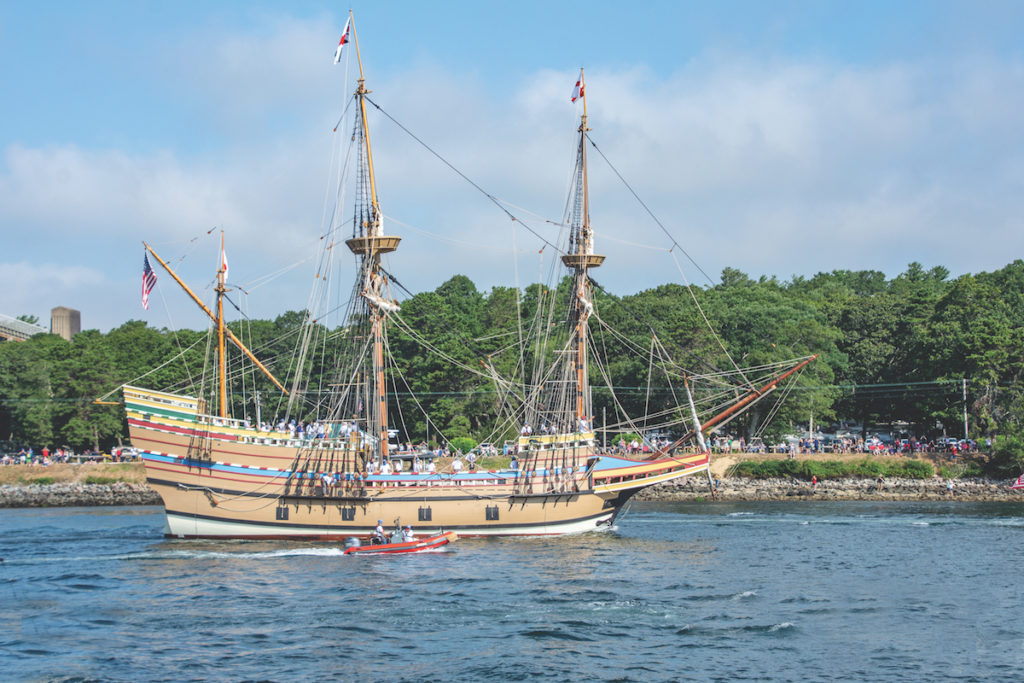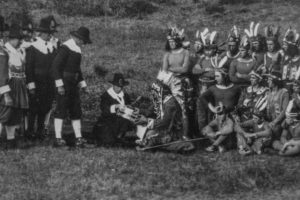
PROVINCETOWN — On Nov. 11, 1620, 130-odd sea-weary Brits stepped off the Mayflower and onto Provincetown’s sandy shores — into a new world, barely inhabited and ripe with possibility. Then they traveled south and west, to Plymouth; met the Wampanoag tribe, a well-meaning if not particularly sophisticated people; learned from them to cultivate the land; struck up a generous alliance; became the best of friends. So was born Plymouth Colony, and American history. Right?
“Bullshit,” said Paula Peters, a Wampanoag historian and former Mashpee Wampanoag Tribal Council member.
The 400th anniversary of the Mayflower’s arrival in Provincetown comes in a year that will likely earn a spot in history books as well. America has grappled with a deadly pandemic and a divisive presidential election, and this summer’s Black Lives Matter protests opened eyes to both the systemic injustice that black, indigenous, and people of color (BIPOC) face, and the persistent whitewashing of their history.
“It’s the winners who write the books, who tell the story,” said Isaac Lopez, a member of Racial Justice Provincetown who is Mexican and Aztec.
“When you tell a story,” he asked, “are you telling it in a way that represents everyone who was involved? Or are you just representing the winners?”
The story of the so-called Pilgrims that opened this article is the version taught in most elementary school classrooms, complete with construction-paper Pilgrim hats and Indian feather headdresses. It’s a version that, despite historian Howard Zinn’s best efforts, persists in the American popular imagination — and one that Lopez and Peters would place squarely in the “representing-the-winners” category of history.
“It’s easy for middle- or upper-class white America to tell themselves this story to wash their hands of it, Pontius Pilate style,” said Lopez. “The romanticism of the events — pilgrims coming, being welcomed, everyone living happily ever after — is a really easy way to think about it.”
Is there a version of the Mayflower story that represents everyone who was involved? “Let me put it this way,” Peters said. “You can’t create a colony without creating people who are colonized.”
The first point of contention, Peters said, is this: the Mayflower’s passengers by no means arrived at an empty, vacant land. And the second: by no stretch of the imagination were the Wampanoag primitive.

Before the 1615 to 1619 plague, between 90,000 and 100,000 Wampanoag people lived and thrived in the Cape Cod region. The plague, said Peters, wiped out between 60 and 90 percent of the tribe’s population — a devastating loss, but one that would still have left a community of at least 9,000 Wampanoag that dwarfed the 130-odd Europeans.
“And they were very sophisticated,” said Peters. “While they didn’t have written language, they understood the world around them — the environmental, the celestial, the agricultural. If not for their knowledge of how to hunt, fish, and plant here, the Pilgrims would not have survived.”
As for a friendly, mutually beneficial alliance between the colonists and Oosameequan, the massasoit, or leader, of the Wampanoag? Peters turned that notion on its head.
The initial alliance was duplicitous on the part of the settlers, she said.
Had Massasoit Oosameequan been aware that the settlers expected him to answer to the crown of England, he — who had command over many tribal villages — “would never have agreed to that alliance,” said Peters. “Why would he relinquish his power to a ragtag bunch of ne’er-do-wells who had just sort of washed ashore, and were struggling to even take care of themselves?”
Misinformation (what Peters calls “marginalized information”) about indigenous history is extensive. For example, in William Bradford’s version of the first Thanksgiving, he described the Wampanoag welcoming the immigrants in English.
That certainly happened, said Peters, but not because the Wampanoags admired the Englishmen. In fact, Squanto — that early liaison between the Mayflower passengers and the native people — had been sold into slavery in Spain before 1620, learned English in England, then found his way back home.
“Americans are only comfortable going back so far,” said Peters. “They’re comfortable going back to 1620, which is the year everything happened — for them. But it’s hugely important to go to those uncomfortable places, to reveal true stories, to take a strong look at the inhumanity of colonization.”
And, emphasized Peters and Lopez, American colonization is by no means a problem of the past. Wampanoag, the tribe’s language, is no longer actively spoken today. The Mashpee Wampanoag won recognition from the federal government only in 2007. The Covid-19 pandemic has affected indigenous populations at a rate 3.5 times that of non-Hispanic whites, according to the Centers for Disease Control.
“People who don’t have to face these issues don’t think about them,” Lopez said. “But the indigenous people affected 400 years ago now have been put on this plot of land that may or may not be their ancestral home. They don’t have the same access that white people do to voting rights, let alone food, or making money. People build pipelines through their land, bomb on their land.”
“All my life,” said Peters, “we have been fighting against a government that is continually trying to erase us. But there isn’t any tribe more resilient in this country than the Wampanoag. We’re still here.”



